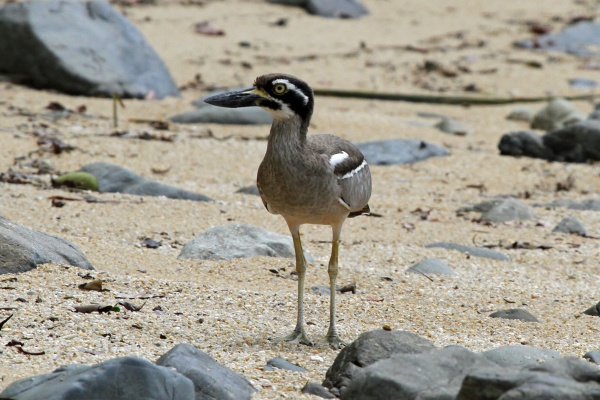Facts About Beach stone-curlew
The beach stone-curlew, also known as the beach thick-knee, is a captivating bird native to Australasia and Southeast Asia. It ranks among the largest shorebirds globally, measuring about 55 cm in length and weighing approximately 1 kg. Unlike most of its stone-curlew relatives, this bird is not strictly nocturnal; you can frequently observe it foraging during the day. The bird moves at a leisurely pace, occasionally breaking into short runs. However, it is quite cautious and will take off with slow, stiff wingbeats if approached too closely.
You will find the beach stone-curlew inhabiting a variety of coastal environments such as undisturbed open beaches, exposed reefs, mangroves, and tidal sand or mudflats. Its range is extensive, covering coastal regions of eastern Australia, New Guinea, New Caledonia, Indonesia, Malaysia, and the Philippines. Despite this broad distribution, the beach stone-curlew is generally uncommon and particularly rare south of Cairns.
These birds exhibit a unique nesting behavior—they lay a single egg just above the high tide line on open beaches. This placement makes the egg highly susceptible to predators and human activities, posing a significant risk to their reproduction.
Due to threats such as habitat loss, human disturbance, and predation, the beach stone-curlew is listed as Near Threatened on the IUCN Red List of Threatened Species. Conservation efforts are crucial to ensure this remarkable bird continues to thrive in its natural habitat.
